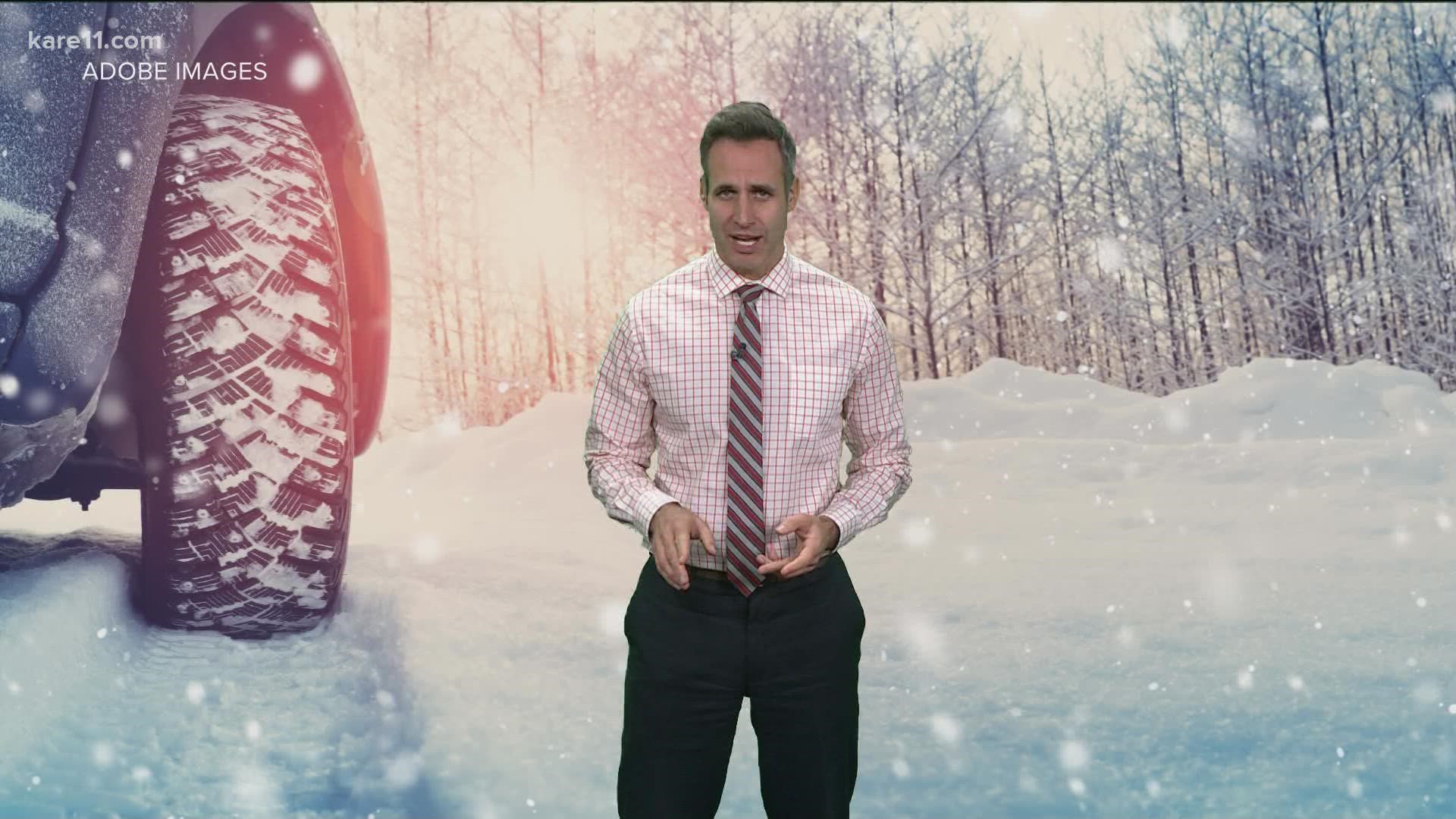MINNEAPOLIS — Winter storms, bad weather and sloppy road conditions are a factor in nearly half a million crashes every year, according to AAA. Severe weather can be both frightening and dangerous for drivers. To make sure you get from point A to point B this winter, here are some reminders for when you’re behind the wheel in adverse conditions
Before the first snowfall service your vehicle. Check brakes, top off fluids, and check tire pressure to make sure it’s within the manufacturer’s acceptable range. When on the road, keep your gas tank at least half full to avoid gas line freeze up.
When driving in snow be sure to accelerate and decelerate slowly to help maintain traction and avoid skids. Leo Waldenback, co-founder of Zutobi, recommends cutting your speed when driving on packed snow and increasing your following distance to seven seconds or more while on icy roadways.
“If you’re driving on ice, you should know the fact that the braking distance can be 10 times longer and you may need to slow down to a crawl," Waldenback says.
When you do slow down, brake gently. This allows your car to maintain traction. Stopping distances greatly increase when roads are covered in snow or ice.
To put that in perspective, if you're traveling at a speed of 35 mph on dry pavement, it will take you 60 to 100 feet to come to a stop. On snow packed streets, that distance can easily double depending on conditions, while stopping on icy streets can require a minimum distance of 600 feet.
Even though cruise control is great for fuel economy it should never be engaged in icy conditions as it can cause your wheels to spin at different speeds, which may lead to loss of control.
Waldenback stresses planning your maneuvers well in advance and do one thing at a time. If heading into a corner - brake, then turn, then accelerate. “Curbs tend to hide spots of ice, they tend to freeze first before the rest of the road and they remain frozen longer than the rest of the road.”
Remember, it’s all about adapting to the conditions and travelling at a slower speed than posted is often necessary. If you want more winter driving tips, they can be found at zutobi.com.

